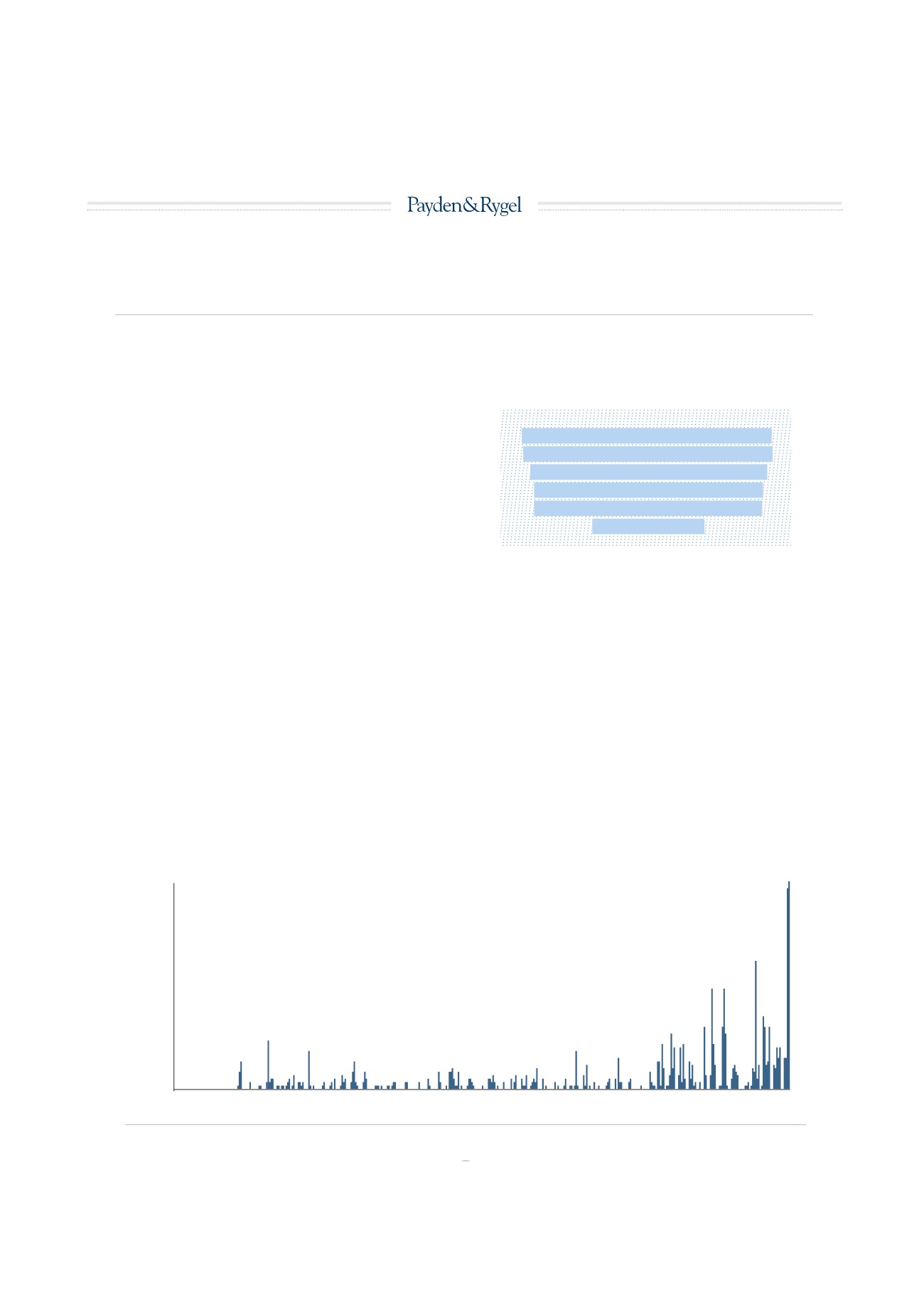

Press, Journal Article
1
O
ne of the most discussed topics in 2017 has been the Federal
Reserve’s bloated balance sheet and the steps the Fed might take
to reduce the bloat. Interest in the topic has reached a fevered pitch of
late, with the number of media stories referencing the “Fed’s balance
sheet” spiking (
see Figure 1
).
The Fed itself has fanned the flames of market worries by suggesting
that an unwind could begin soon and by publishing research to show
that successive quantitative easing (QE) programs boosted equity
prices by 11-15%, depressed longer-term interest rates by around 90
basis points (or 0.90%) and weakened the U.S. dollar versus its peers
by up to 5%.
Given these alleged market impacts as the balance sheet grew, it is
natural for investors to wonder whether the unwind will cause waves
as the tide rolls out. Or, as one bond market observer remarked,“Who
will buy all those bonds if the Fed isn’t buying?”
1
We say, worry not.
We think the Fed will seek to avoid a“Taper Tantrum 2.0” at all costs.
Dire economic and market consequences from the Fed’s balance sheet
will be more imagined than real. And the big balance sheet is here
to stay, as the Fed has discovered a new role for itself in the money
markets.
THE BALANCE SHEET BASICS: THE GOOD OLD
DAYS
Understanding a central bank’s balance sheet requires a few basics.
The primary purpose of the Fed’s balance sheet—or that of any cen-
tral bank for that matter—is to back the nation’s currency. To that
end, the Fed holds assets to match its liabilities, which comprise the
nation’s money, in the form of bank reserves and physical currency.
Circa 2007 (before the balance sheet ballooned), most of the Fed’s
balance sheet consisted of Treasury bills on the asset side and cur-
rency on the liability side (
see Figure 2 on page 2
). In those days, as
bank lending and deposit creation progressed, demand for currency
and reserves increased. The balance sheet grew at roughly 5-7% per
year for several decades, coincident with nominal spending growth
(remember this, it will be important later).
Bank reserves were a tiny share of the Fed’s liabilities.Then, as now, all
depository institutions held bank reserves at the Fed, as prescribed by
law, to meet minimum“reserve requirements.”Think of bank reserves’
function like an individual’s checking account, save one detail: unlike
a personal checking account, banks can temporarily skirt overdrafts.
H ow W e L earned to S top W orrying
and L ove the F ed’s B ig B alance S heet
«THE PRIMARY PURPOSE OF
THE FED’S BALANCE SHEET—
OR THAT OF ANY CENTRAL
BANK FOR THAT MATTER—
IS TO BACK THE NATION’S
CURRENCY.»
Number of Stories
0
10
20
30
40
50
60
Jul
2016
Source: Bloomberg
Feb
2016
Mar
2016
Apr
2016
May
2016
Jun
2016
Aug
2016
Sep
2016
Oct
2016
Nov
2016
Dec
2016
Feb
2017
Jan
2017
Mar
2017
MEDIA HOOPLA AROUND THE “FED’S BALANCE SHEET” TAKES OFF IN 2017
fig. 1
47
















